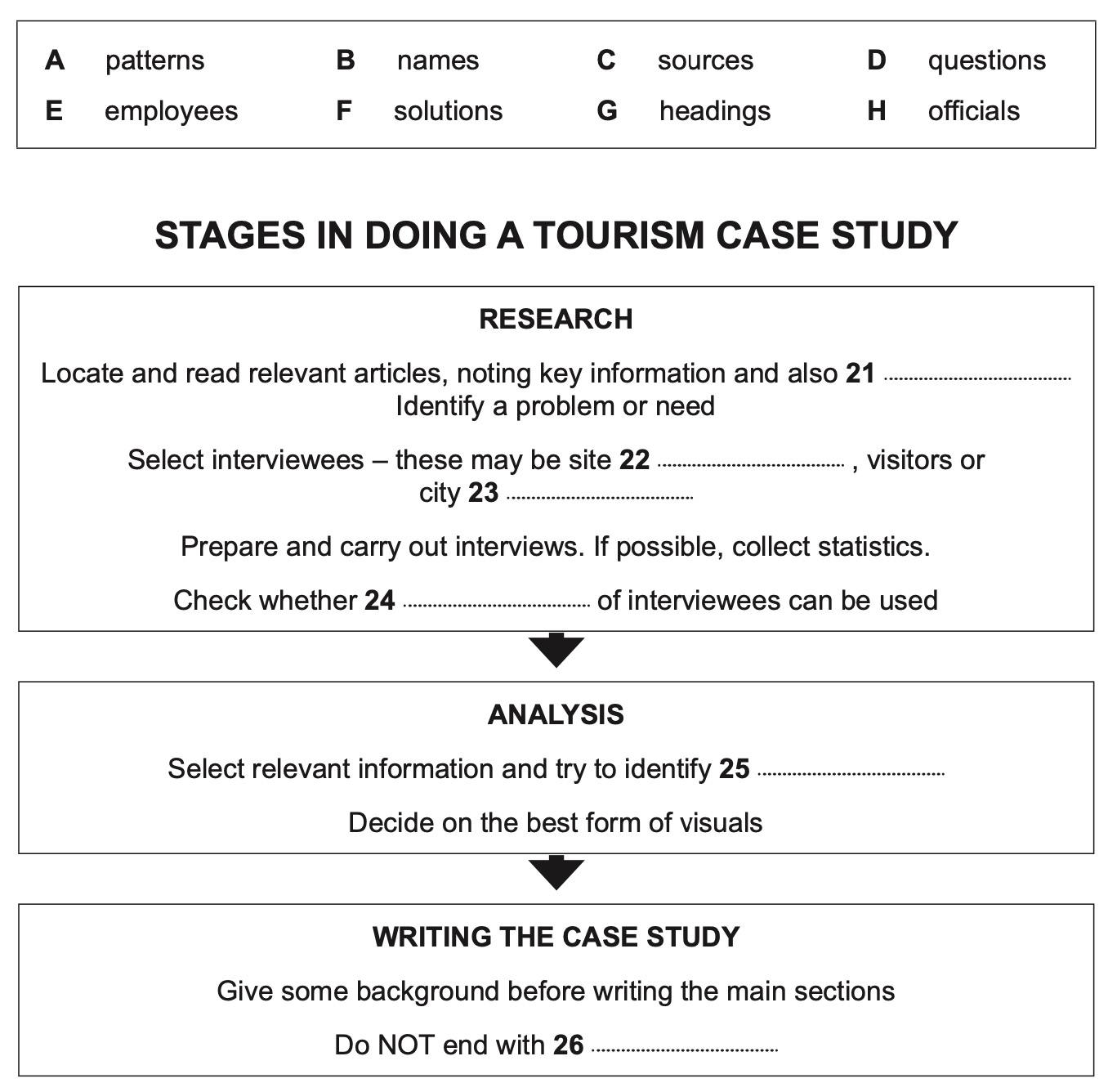NATALIE: Dave, I'm worried about our case study.
娜塔莉:戴夫, 我担心我们的案例研究。
I've done a bit of reading, but I'm not sure what's involved in actually writing a case study - I missed the lecture where Dr Baker talked us through it.
我读过一些文章,但我不清楚怎么写一篇案例研究——我好怀念贝克博士课上讲过的内容。
DAVE: OK, well it's quite straightforward.
戴夫: 好吧,其实很明了了。
We've got our focus - that's tourism at the Horton Castle site.
我们已经知道重点是什么了——就是关于霍顿城堡的旅游。
And you said you'd done some reading about it.
而且你说过你已经阅读了相关的一些资料。
NATALIE: Yes, I found some articles and made notes of the main points.
娜塔莉:是的,我找到了相关的一些文章,而且做了一些笔记。
DAVE: Did you remember to keep a record of where you got the information from?
戴夫: 你有记得记录你的信息出处吗?
NATALIE: Sure. I know what a pain it is when you forget that.
娜塔莉:当然了。我深知忘记记录出处的痛苦了。
DAVE: OK, so we can compare what we've read.
戴夫:好的。那我们就可以比较一下我们阅读过的文章了。
Then we have to decide on a particular problem or need at our site.
然后就可以决定这个景点的问题和需要所在。
And then think about who we're going to interview to get more information.
最后决定由谁去采访更多的信息。
NATALIE: OK. So who'd that be?
娜塔莉:好的。那是谁呢?
The people who work there?
在那里上班的人?
And presumably some of the tourists too?
还是游客?
DAVE: Yes, both those groups.
戴夫:是的,两组都是。
So we'll have to go to the site to do that, I suppose.
所以我猜想我们要到那里去。
But we might also do some of our interviewing away from the site - we could even contact some people here in the city, like administrators involved in overseeing tourism.
但我们可能也需要在其他地方进行采访——我们甚至还可以联系这个城市里的人,比如负责旅游业的官员。
NATALIE: OK. So we'll need to think about our interview questions and fix times and places for the meetings.
娜塔莉:好的。那我们就需要思考一下采访的问题以及会面的时间和地点。
It's all going to take a lot of time.
这都需要花费很长时间
DAVE: Mmm. And if we can, we should ask our interviewees if they can bring along some numerical data that we can add to support our findings.
戴夫: 嗯。并且如果可以的话,我们可以问问受访者是否可以带一些数据来,这样我们就可以把它添加进报告中了。
NATALIE: And photographs?
娜塔莉:照片呢?
DAVE: I think we have plenty of those already.
戴夫:我觉得照片已经足够了。
But Dr Baker also said we have to establish with our interviewees whether we can identify them in our case study or whether they want to be anonymous.
但是贝克博士也提到我们必须和受访者沟通好,关于他们是否愿意在案例研究中出现,还是说希望以匿名的形式。
NATALIE: Oh, I wouldn't have thought of that.
娜塔莉:哦,这个我倒没想到。
OK, once we've got all this information, I suppose we have to analyse it.
一旦我们得到了信息,我想我们就要去分析一下了。
DAVE: Yes, put it all together and choose what's relevant to the problem we're focusing on, and analyse that carefully to find out if we can identify any trends or regularities there.
戴夫:是的,把所有信息都放到一起,然后选出和我们研究问题相关的信息,并且仔细分析出我们是否可以找到任何的趋势和规律。
That's the main thing at this stage, rather than concentrating on details or lots of facts.
这才是这个阶段的主要事情,并非关注一些细节和事实。
NATALIE: OK. And then once we've analysed that, what next?
娜塔莉:好的。那我们分析之后,接下来干什么?
DAVE: Well, then we need to think about what we do with the data we've selected to make it as clear as possible to our readers.
戴夫: 然后我们要考虑如何让我们选择的数据让读者尽可能的看的清楚。
Things like graphs, or tables, or charts …
比如说用一些图表,表格等等……
NATALIE: Right.
娜塔莉:对的。
DAVE: Then the case study itself is mostly quite standard; we begin by presenting the problem, and giving some background, then go through the main sections, but the thing that surprised me is that in a normal report we'd end with some suggestions to deal with the problem or need we identified, but in a case study we end up with a question or a series of questions to our readers and they decide what ought to be done.
戴夫: 这个案例研究本身是非常标准化的。我们通过提出问题开始,然后给一些背景知识,接着来到主要部分,但让我感到惊讶的是在寻常的报告中,都是以提出解决问题的建议来结束,但是在案例研究中,我们以向大家提出问题结束,然后由他们来决定应该做什么。
NATALIE: Oh I hadn't realised that.
娜塔莉:这个我还没意识到。
下一题
剑12 undefined
